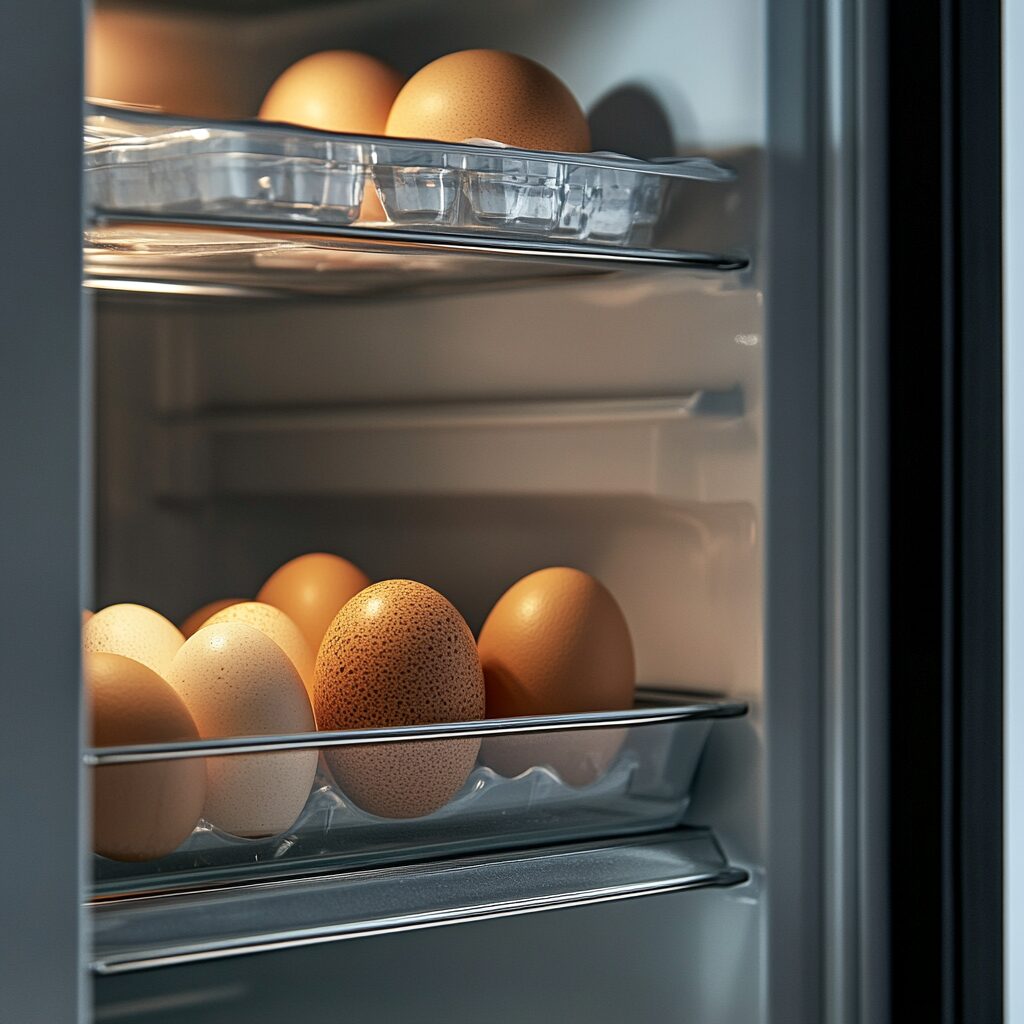Many refrigerators come with those convenient egg-shaped compartments built right into the door. While they might seem perfect for egg storage, this common kitchen practice could actually be putting your eggs at risk. The door is actually the worst place to store your eggs, and there are several compelling reasons why. Here’s what food safety experts want you to know about proper egg storage.
Temperature fluctuations make door storage risky

Each time you open your refrigerator door, the temperature in that area rises significantly. While the main compartment maintains a steady temperature, the door area experiences frequent temperature changes that can affect food safety.
The ideal storage temperature for eggs is a consistent 40°F (4°C) or below. When stored in the door, eggs may repeatedly warm up and cool down, potentially promoting bacterial growth. These temperature fluctuations can reduce shelf life and increase the risk of spoilage.
Moving your eggs to a middle shelf ensures they stay at a constant temperature, maximizing their freshness and safety. The stable environment helps maintain quality for the full 4-5 weeks of refrigerated storage time.
Original cartons provide essential protection
Those molded plastic egg holders in your refrigerator door might seem convenient, but they’re actually inferior to the original carton. The cardboard carton serves multiple important purposes beyond simply holding eggs in place.
Original cartons are specifically designed to prevent moisture loss and protect eggs from absorbing strong odors from other foods. They also display crucial information like expiration dates and lot numbers that can be important for food safety recalls.
Keeping eggs in their original packaging provides better cushioning against breaks and cracks. The carton’s design also helps maintain proper humidity levels around the eggs, preventing quality deterioration.
US eggs require consistent refrigeration

In the United States, eggs undergo mandatory washing and sanitization before sale. This process removes the natural protective coating called the cuticle. Without this natural barrier, eggs become more vulnerable to bacterial contamination and must be kept consistently cold.
The washing requirement makes proper refrigeration even more critical for US eggs compared to those in many other countries. European eggs, which aren’t typically washed, retain their protective coating and can often be stored at room temperature.
Once refrigerated, eggs must stay refrigerated. Temperature fluctuations can cause moisture to condense on the shell, potentially drawing bacteria inside. This makes proper storage location particularly important for food safety.
Position matters more than you think
The way eggs sit in their carton isn’t random. Eggs should be stored with their pointed end facing downward. This positioning helps keep the yolk centered within the white, maintaining quality during storage.
Door storage often results in eggs being placed sideways or in random orientations. This can cause the yolk to drift toward the shell, potentially affecting quality and making them less suitable for certain cooking applications.
Proper positioning in the original carton also helps prevent the air cell at the egg’s wider end from being disrupted, which can impact freshness.
Middle shelf placement maximizes freshness

The middle shelf of your refrigerator provides ideal conditions for egg storage. This location typically maintains the most consistent temperature and is less affected by the warm air that enters when the door opens.
Place eggs toward the back of the middle shelf, where temperatures remain most stable. This location also reduces exposure to light, which can affect egg quality over time.
If you’re wondering about the impact of proper storage, consider this: eggs stored correctly on a middle shelf can maintain their quality for up to three weeks beyond their purchase date, while improperly stored eggs might deteriorate much sooner.
Making these simple changes to your egg storage habits can significantly extend their usable life and ensure they remain safe to eat. The next time you’re tempted to use those built-in door compartments, remember that the few seconds saved in convenience aren’t worth compromising your eggs’ quality and safety. Keep them in their original carton, on a middle shelf, and enjoy fresh, safe eggs for weeks to come.

